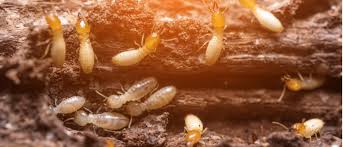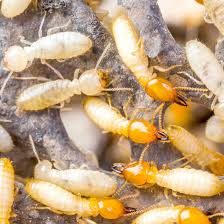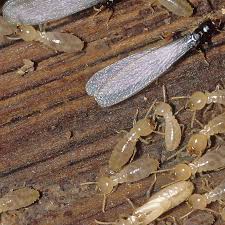The 3-Minute Rule for Termite Control Devices
A termite nest can be considered as being composed of two parts, both the inanimate and the animate. The animate is all the termites living inside the colony, and the inanimate part is the construction itself, which is constructed by the termites. Nests can be broadly separated into three main classes: subterranean (completely below ground), epigeal (protruding above the soil surface), and arboreal (built above ground, but constantly connected to the ground via shelter tubes).184 Epigeal nests (mounds) protrude from the ground with ground contact and are made from earth and sand.


To construct their nests, termites primarily use faeces, which have many desirable properties as a construction material. Other building materials include partly digested plant material, used in carton nests (arboreal nests built from faecal elements and wood), and soil, used in subterranean nest and mound construction. Not many nests are observable, as many nests in tropical woods are situated underground.186 Species in the subfamily Apicotermitinae are great examples of subterranean nest contractors, as they only dwell inside tunnels.
Nests and mounds protect the termites' tender bodies against desiccation, light, pathogens and parasites, as well as providing a fortification against predators.188 Nests made out of carton are particularly weak, and so the inhabitants utilize counter-attack approaches against invading predators. .
Termite Control Cost Near Me Fundamentals Explained
Arboreal carton nests of mangrove swamp-dwelling Nasutitermes are enriched in lignin and depleted in cellulose and xylans. This change is caused by bacterial illness in the gut of the termites: they utilize their faeces as a carton building material. Arboreal termites nests can account for up to 2% of above ground carbon storage in Puerto Rican mangrove swamps.
Some species build complex nests called polycalic nests; this habitat is known as polycalism. Polycalic species of termites sort multiple nests, or calies, connected by subterranean chambers.107 The termite genera Apicotermes and Trinervitermes are known to possess polycalic species.191 Polycalic nests seem to be less frequent in mound-building species although polycalic arboreal nests have been observed in a few species of Nasutitermes.191.
Nests are considered mounds if they protrude from the planet's surface. A mound provides termites the same protection for a nest but is stronger.189 Mounds located in areas with torrential and continuous rainfall are at risk of mound erosion due to their clay-rich construction. Those made from carton can provide protection from the rain, and in fact can withstand large precipitation.
Getting The Termite Control Deals To Work
By way of example, Cubitermes colonies build narrow tunnels utilized as strong points, since the width of the tunnels is little enough for soldiers to obstruct.192 A highly secure chamber, known as the"queens mobile", houses the queen and king and is employed as a last line of defence. .
Species in the genus Macrotermes arguably build the most complex structures in the insect world, constructing enormous mounds. These mounds are among the largest in the world, reaching a height of 8 to 9 metres (26 to 29 ft ), and consist of chimneys, pinnacles and ridges.56 Another termite species, Amitermes meridionalis, can build nests 3Â to 4Â metres (9Â to 13 ft ) high and 2.5 metres (8Â ft ) wide.
The sculptured mounds sometimes have fancy and distinctive types, such as those of their compass termite (Amitermes meridionalis and A. laurensis), which builds tall, wedge-shaped mounds with the long axis oriented about northsouth, which gives them their common name.194195 This orientation has been experimentally shown to assist thermoregulation. The north-south orientation causes the internal temperature of a mound to increase rapidly during the morning when avoiding overheating from the midday sun.
Termites construct shelter tubes, also known as earthen tubes or mud tubes, that begin in the ground. These shelter tubes can be found on walls and other structures.197 Constructed by termites during the night, a time of high humidity, so these tubes provide protection to termites from potential predators, especially ants.198 Shelter tubes also provide high humidity and darkness and allow employees to accumulate food sources that cannot be accessed in any other way.197 All these passageways are produced from dirt and faeces and are normally brown in colour.
6 Easy Facts About Termite Control Cost Near Me Described
They range from less than 1Â cm to several cm in width, but may extend dozens of yards in length.198.
